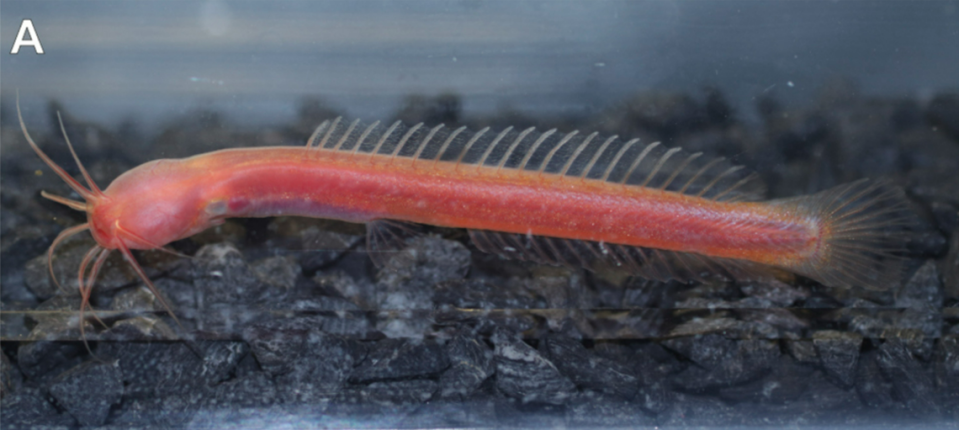‘Cryptic’ creatures lurking in underground wells discovered to be new species in India
Lurking deep below the surface, a sightless creature inhabited a world of darkness. The mysterious animal was spotted every so often but remained largely unknown — until now.
Researchers in southern India spent six years surveying for any signs of this “cryptic” subterranean creature, according to a study published in the journal Vertebrate Zoology. The team toured the Kerala region speaking to locals and recording sightings.
Because it lives exclusively in underground aquifers, “encounters with these subterranean animals are therefore often serendipitous, or happen when the gateways to the underground water-world are scrutinized,” researchers wrote in the study.
The team drained wells and water tanks, searching everywhere from “shallow wetlands” to “home gardens and plantations” and putting out bait traps in caves across Kerala.
Their efforts paid off.
They found dozens of “bizarre” subterranean catfish — and discovered a new species, the study said.
The new species, Horaglanis populi, is a type of “tiny, blind, pigmentless” catfish native to Kerala, researchers said. The “cryptic” fish has no eyes and a “blood-red” coloring.

However, none of these features make Horaglanis populi unique, co-author Neelesh Dahanukar told Mongabay-India, an Indian science news outlet.
“Our genetic analysis suggested that (Horaglanis) populi was genetically much different from all the other known species, but we were surprised that there were no morphological differences to distinguish it from the different species,” Dahanukar said.
A comparative analysis of DNA samples from Horaglanis populi and other subterranean catfish showed the new species had a genetic distance of about 13% to 17% from other known species, the study said. Catfish species are considered distinct if they have more than 7% genetic distance.
“Despite high genetic divergence between all four (subterranean catfish) species, there are no morphological differences that can help in distinguishing them,” Dahanukar told Mongabay-India. “As a result, the only way to distinguish these species is through genetic barcoding.”
Lead author Rajeev Raghavan explained the significance of the new species to the outlet.
“This discovery shows that the diversity of subterranean fish species continues to be underestimated and intensive studies are required to understand their true diversity,” he said.
Horaglanis populi, which means “people” to honor the citizen scientists who contributed to its identification, was found in several Kerala towns including Malapally, Edanadu, Chengannur and Thiruvanvandoor, the study said.
These locations are in southern Kerala, near the southernmost tip of India, about 1,200 miles south of New Delhi.
Rare creature — named after ‘hundred-eyed giant’ — spotted showing off at Thai park
Prehistoric predator’s last meal reveals an undiscovered ancient species, study says
Cloned saltwater creatures hatched from decades-old eggs turn out to be new species

